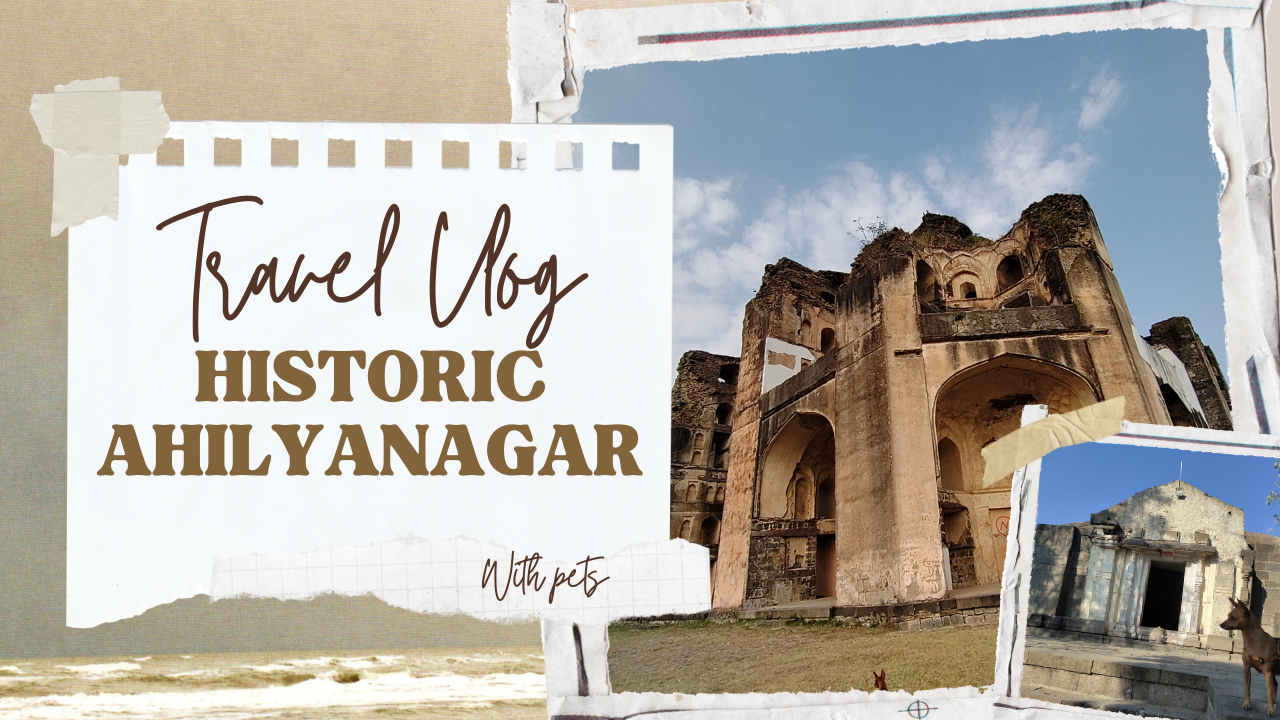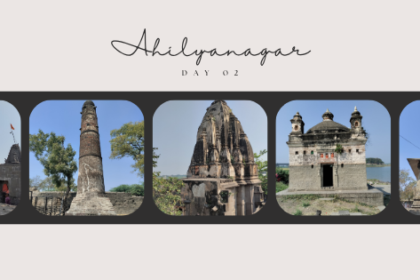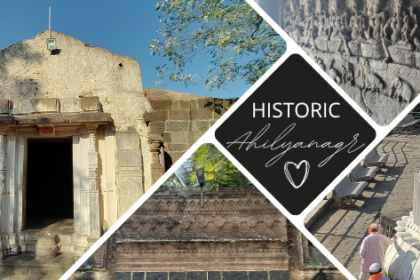Our journey began early on a crisp Saturday morning. My husband and I, along with our ever-energetic pet dog Sophie, set off from Pune to Ahilyanagar, eagerly anticipating the adventures ahead. With the wind in our hair and Sophie happily perched in the backseat, we drove through the tranquil countryside, feeling the excitement of a perfect weekend getaway.
| Click on the links below to read the blogs on the next days of this trip: | Morning | Evening |
| Day 1 | Bagh Rauza, Tomb of Nizam Ahmed Shah, Damdi Masjid. | Tomb of Salabat Khan -II, Hatti Barav, Farah Bagh. |
| Day 2 | Temples of Kaygaon Toka- Rameshwar temple, Shri Siddheshwar Temple, Ghateshwar Mahadev temple | Mahadev Temple (Mallikarjun Temple)in Ghotan. |
| Day 3 | Sangameshwar temple in Parner, Someshwar temple in Parner. | Siddheshwar Mandir in Siddheshwarwadi, Shri Takli Dhokeshwar Cave temple. |
Day 1: A Historic Encounter
We hit the road at 6 AM, greeted by the golden hues of dawn. By 8 AM, we stopped for breakfast at Shivneri misal, where we fueled up on some mouth watering Misal and solkadhi. Shivneri Misal in Manchar is our go-to place for a quick breakfast. It is pet friendly. Their staff is very kind towards pets. Theres a big fenced lawn, a huge parking and clean toilets. The aroma of fresh black tea set the perfect tone for the day.
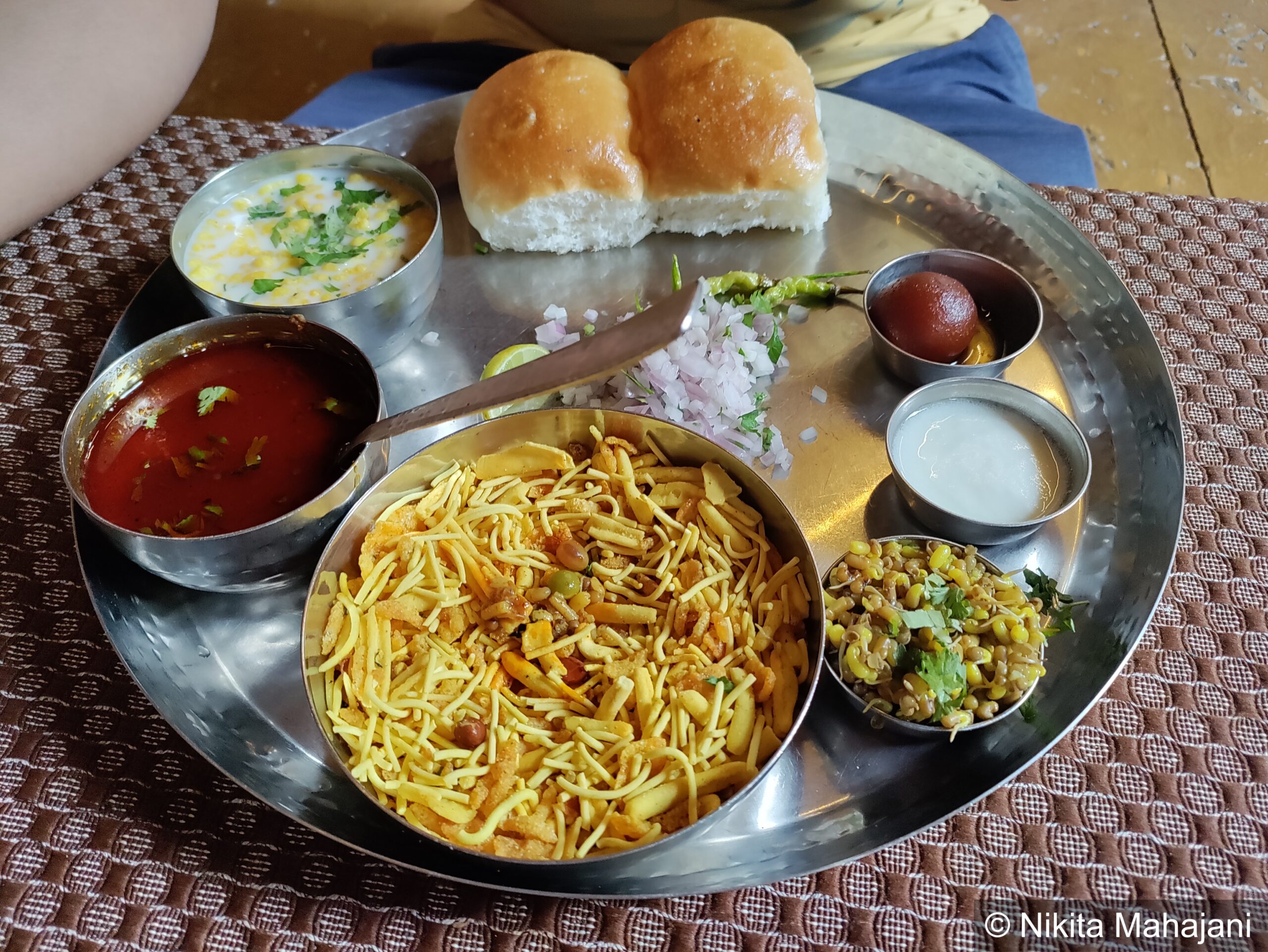
Arriving at Fanaswadi Resort at 10 AM, we were welcomed by its serene ambiance. This is a very authenic Maharashtrian resort nestled in a jackfruit plantation. None of the hotels in Ahmednagar are pet friendly. I randomly came across Fanaswadi on google maps and called them to accomodate my pet on request. The manager readily agreed. The property seemed to be a new one when we visited. The owner has been very kind to keep 3-4 indies on his property. They are never caged or chained. These free roaming indies at Fanaswadi made my day. The entire property has been designed on a contoured site. The restaurant is located at the entrance whereas 8-10 cottages are located on top of the hill. The cottages have both vehicular and pedestrian access routes. Although the rooms are very basic but the desi food in their resttaurant is to die for. On gets panoramic views of the surrounding hills from the cottages. After settling in, we began our journey through Ahilyanagar’s rich history.
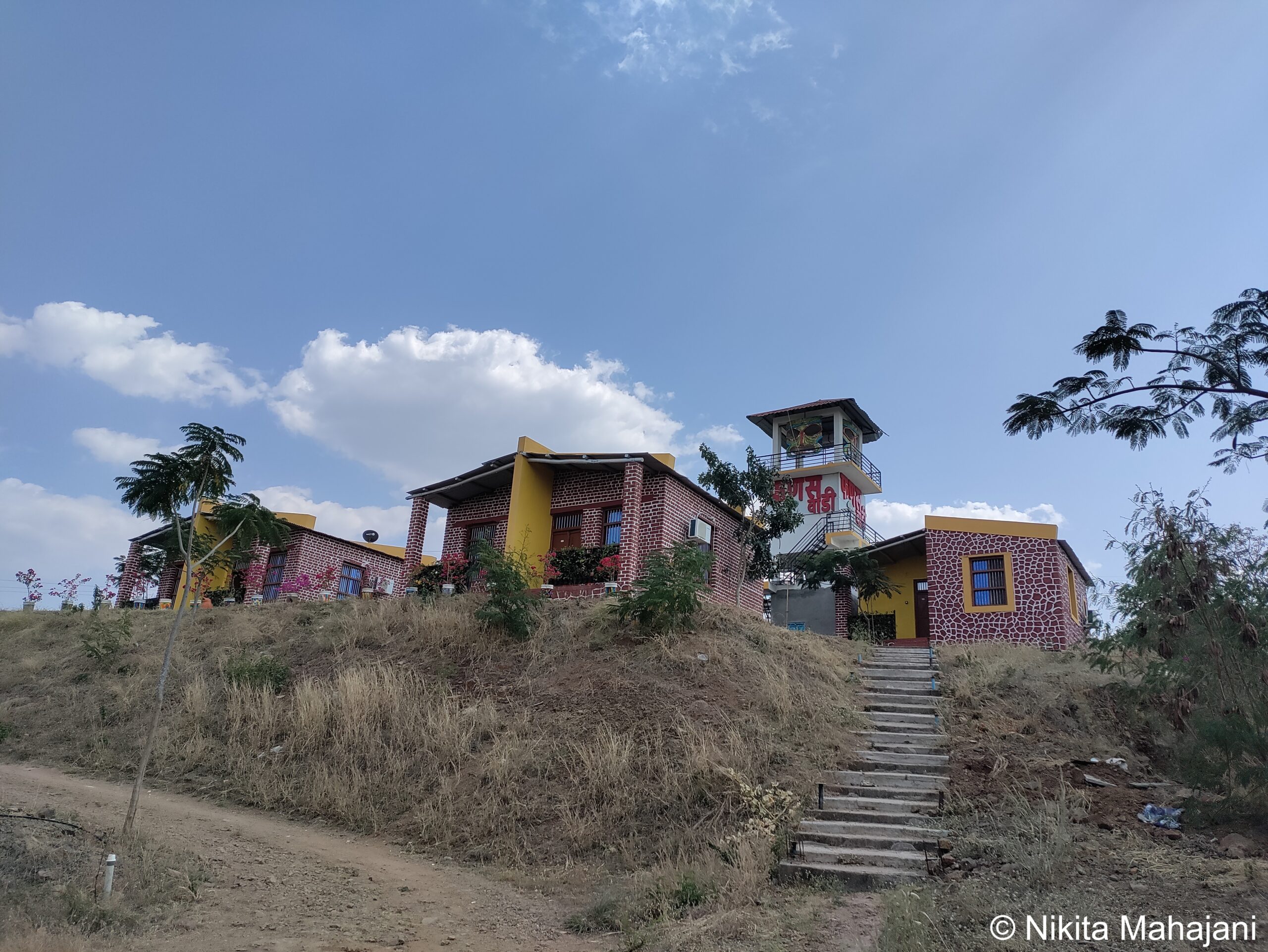
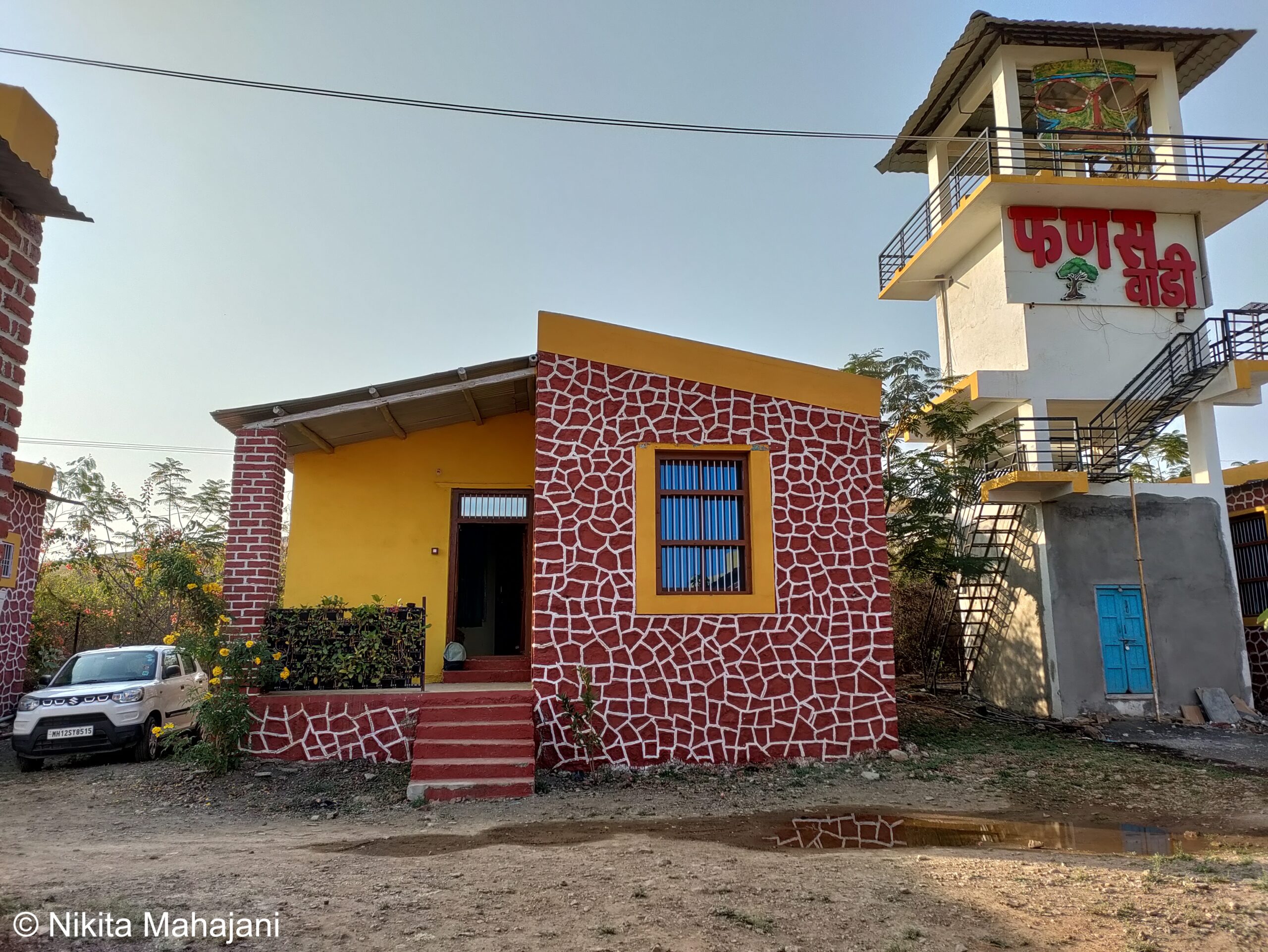

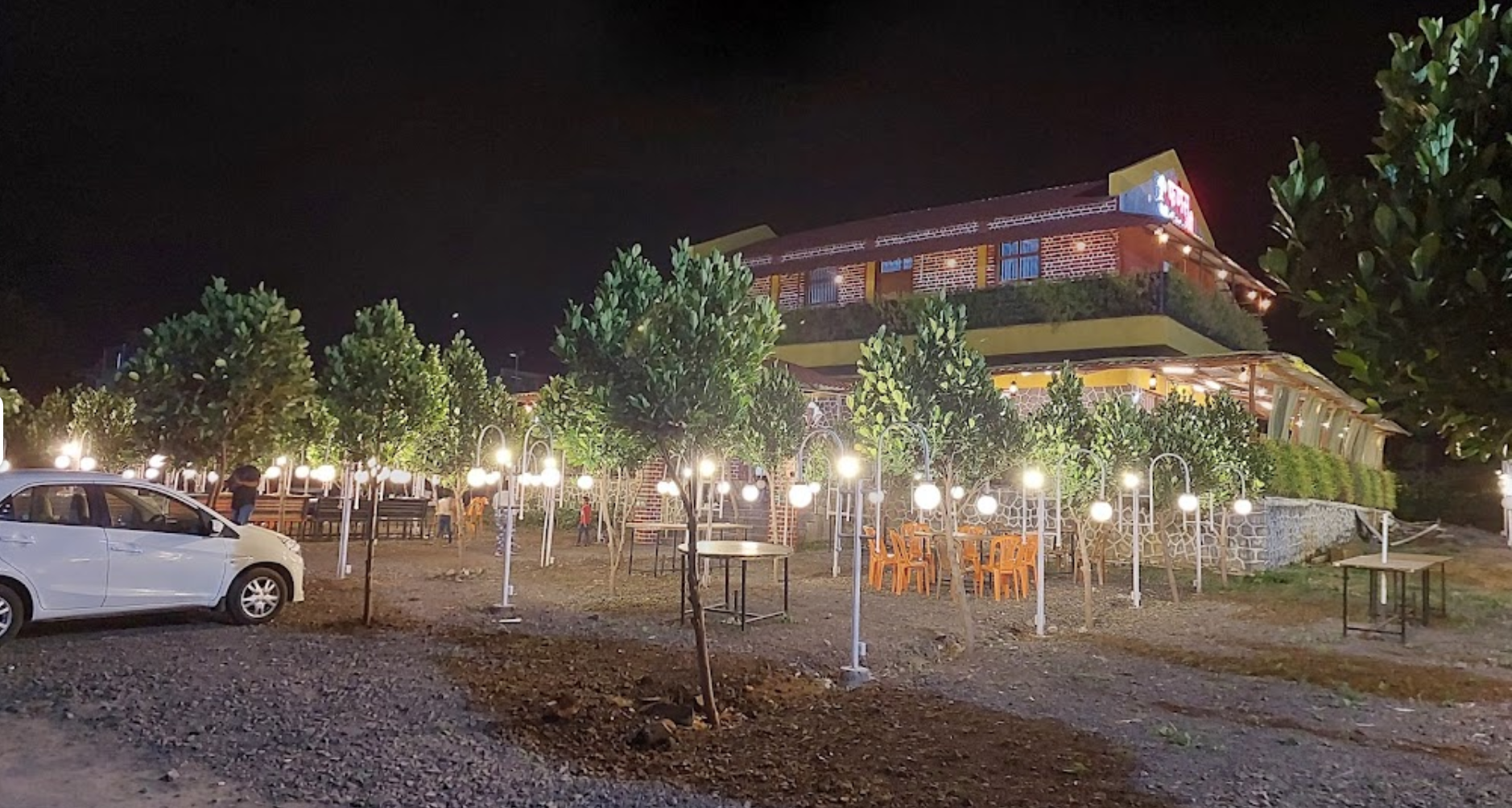
First up on our plan was Bagh Rauza, a stunning mausoleum built in the 15th century. It was difficult to find the access route to this mausoleum even if we could see its huge stone dome roof from a lot of distance from all directions. The mausoleum is surround by illegal encroachments and slums from all side. It is not possible to reach Bagh Rauza by a vehicle. So we parked our car nearby and went walking through the slum.

Within next 2-3 minutes we came across a couple of ancient dome structures which were encroached converted converted to cow sheds by the muslim slum dwellers. Upon reaching the compound wall of Bagh Rauza, I was shocked to see the carcass of a poor calf hung from the ceiling. This practice of hanging the carcass of the the baby calf next to its mother cow is called the ‘Khaal baccha’ technique in the dairy industry. ‘Khaal baccha’ literally translates to ‘skin baby’ in English. It is a practice where a dead male calf’s skin is stuffed with hay or sawdust and kept in front of a cow. This is done to deceive the cow of buffalo into thinking that her child is still alive so that she does not stop producing milk. In most cases, a male calf is starved to death and the flesh is removed from its body and stuffed with hay. The National Dairy Report by FIAPO in 2017 revealed that this practice was widely seen even in remote parts of India.
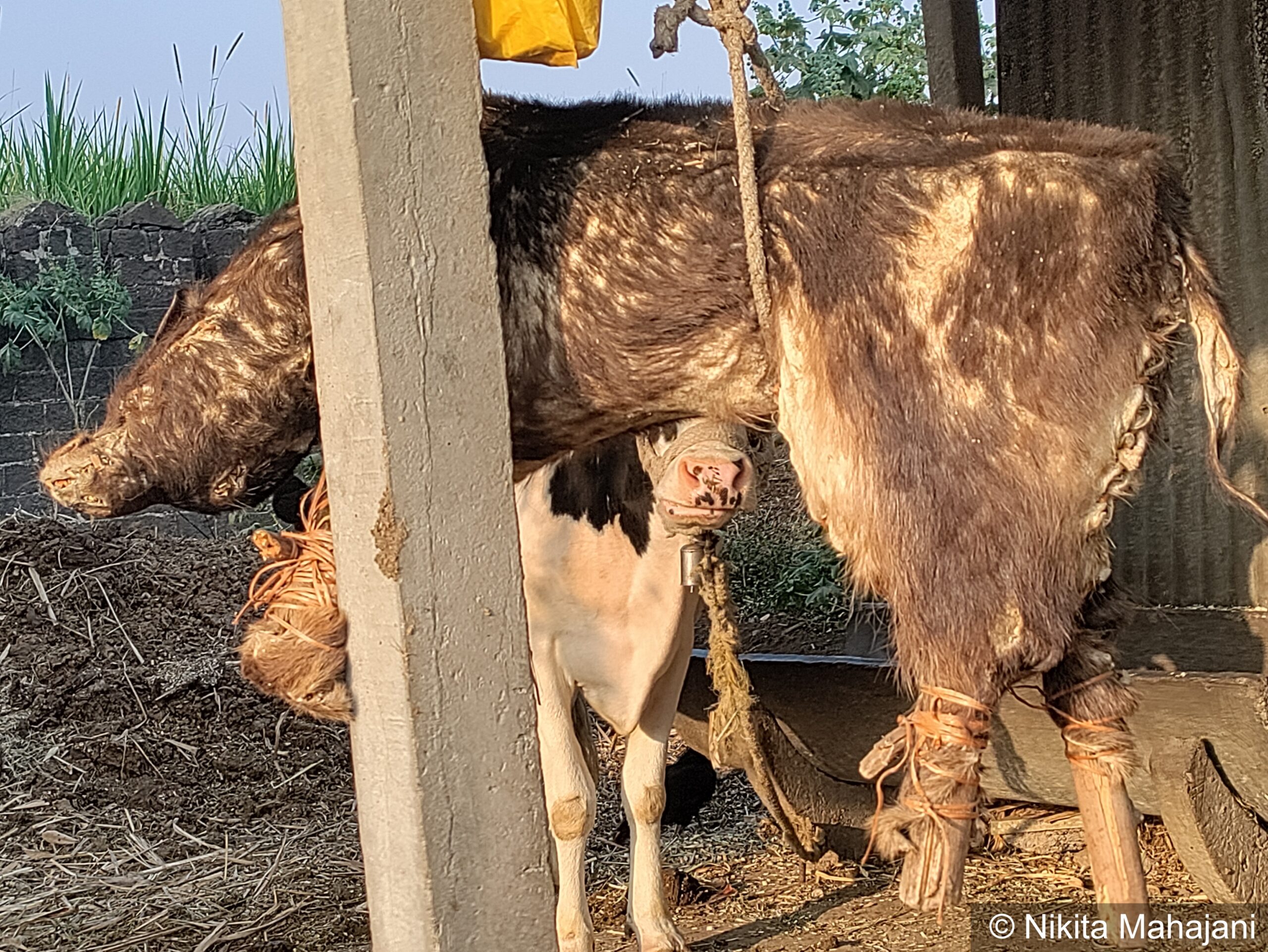
The view of the Khaal bachha brought chills down my spine. How can the dairy industry be so cruel? In a country where cows are workshipped as Gaumata, one can see see dead calfs hung at the entrance of an ASI protected monument. There were a set of beautiful tombs at the entrance. Their names and the story behind them was not published anywhere in the form of signages.
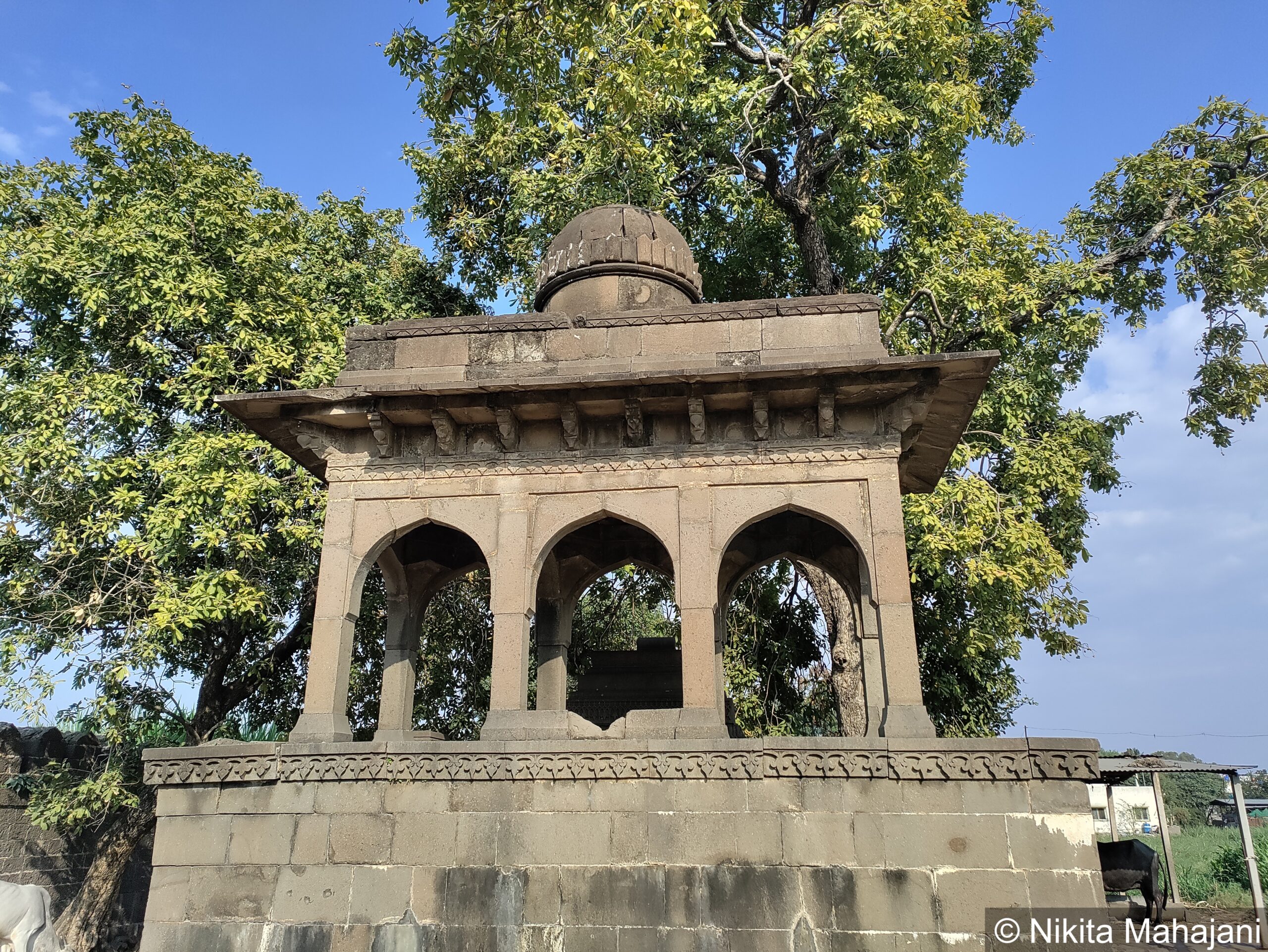
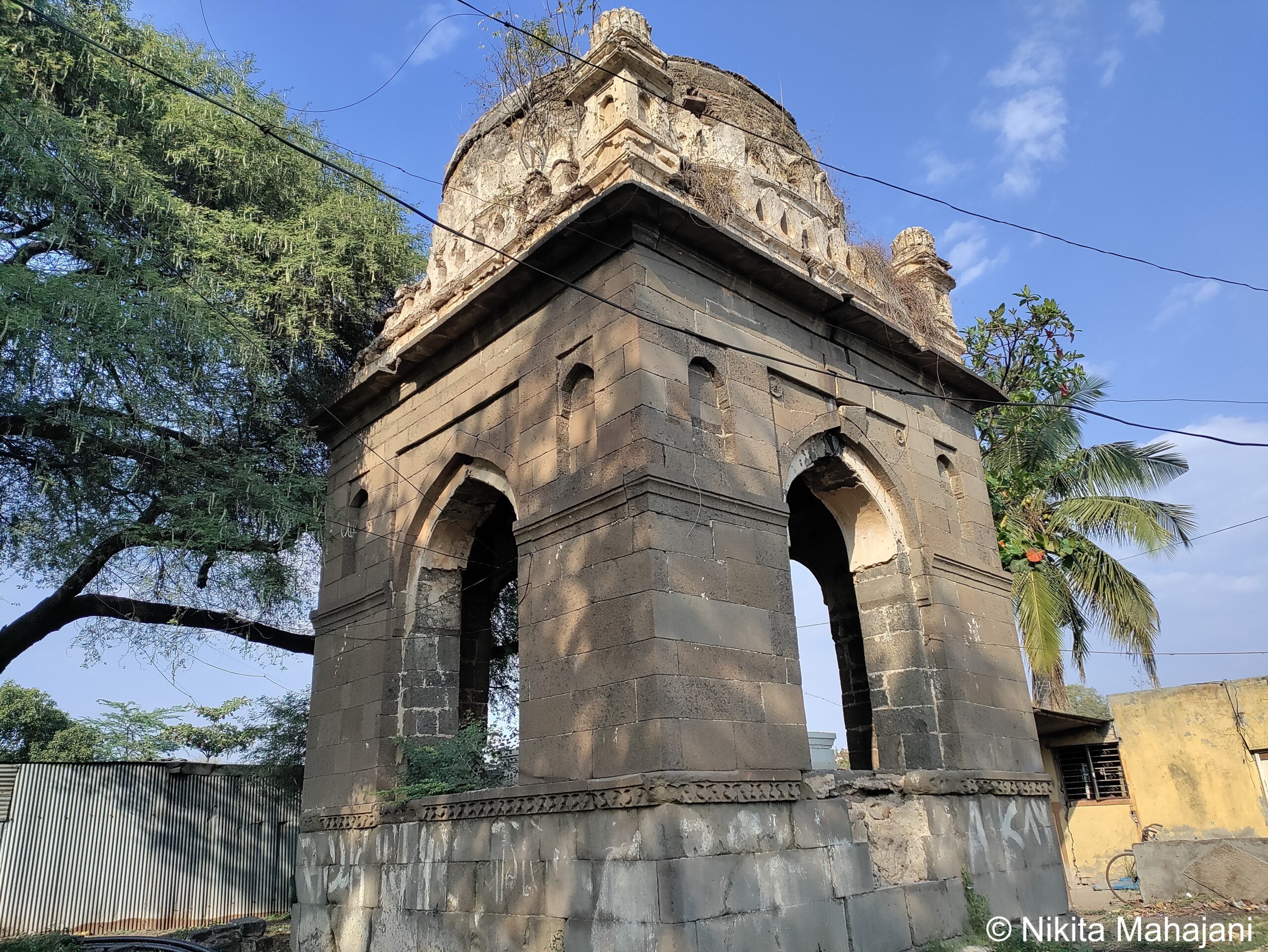
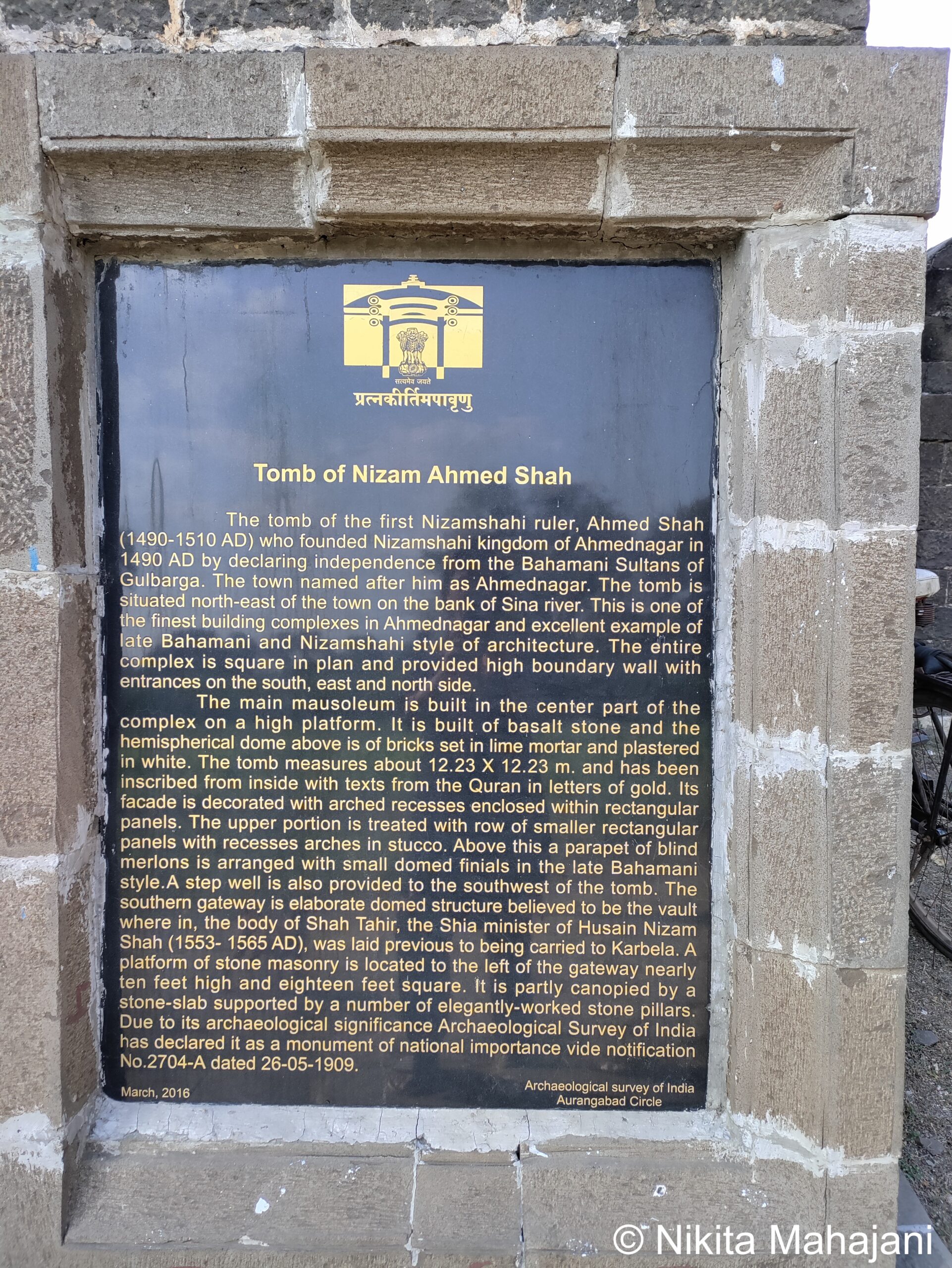
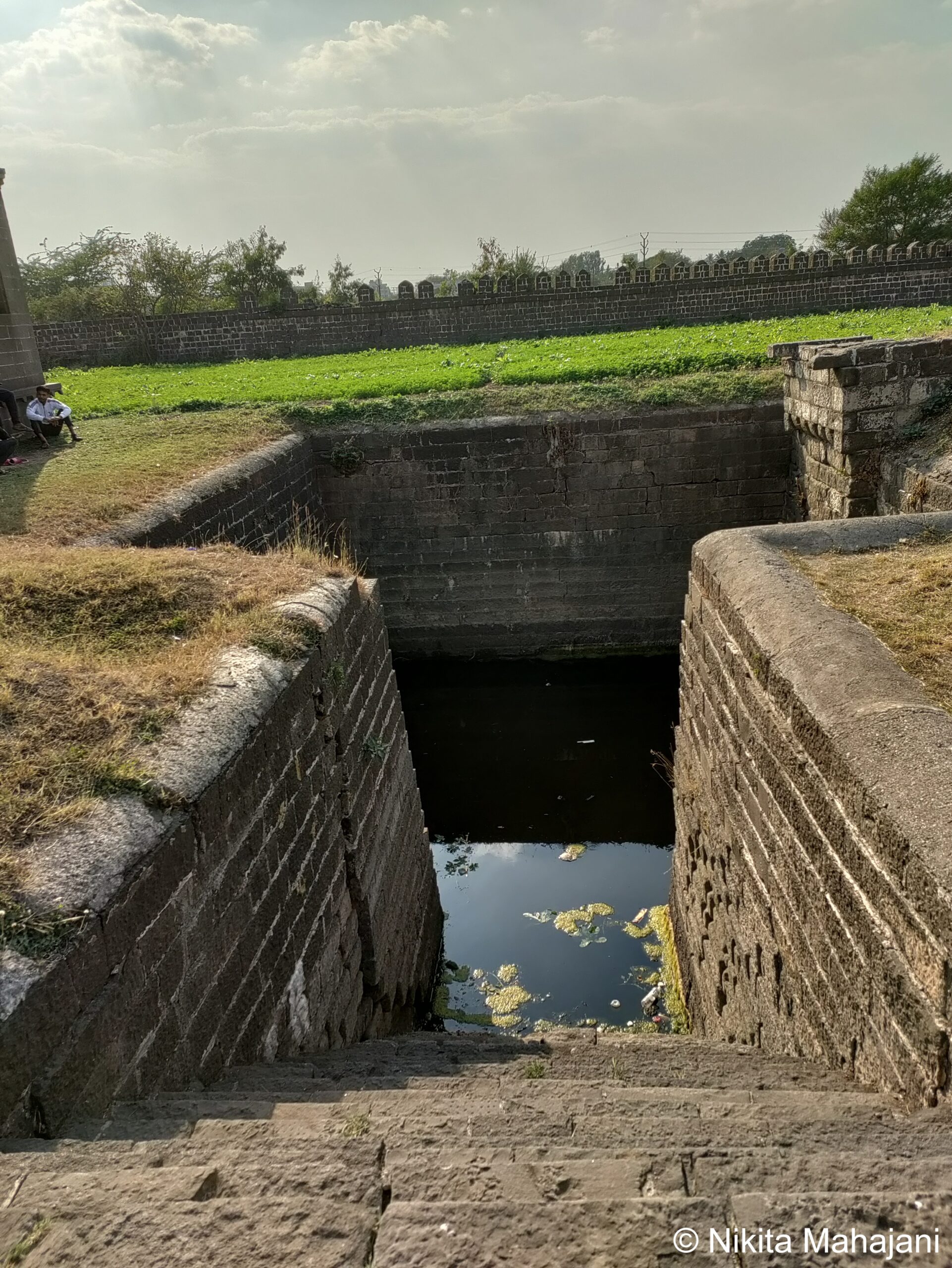
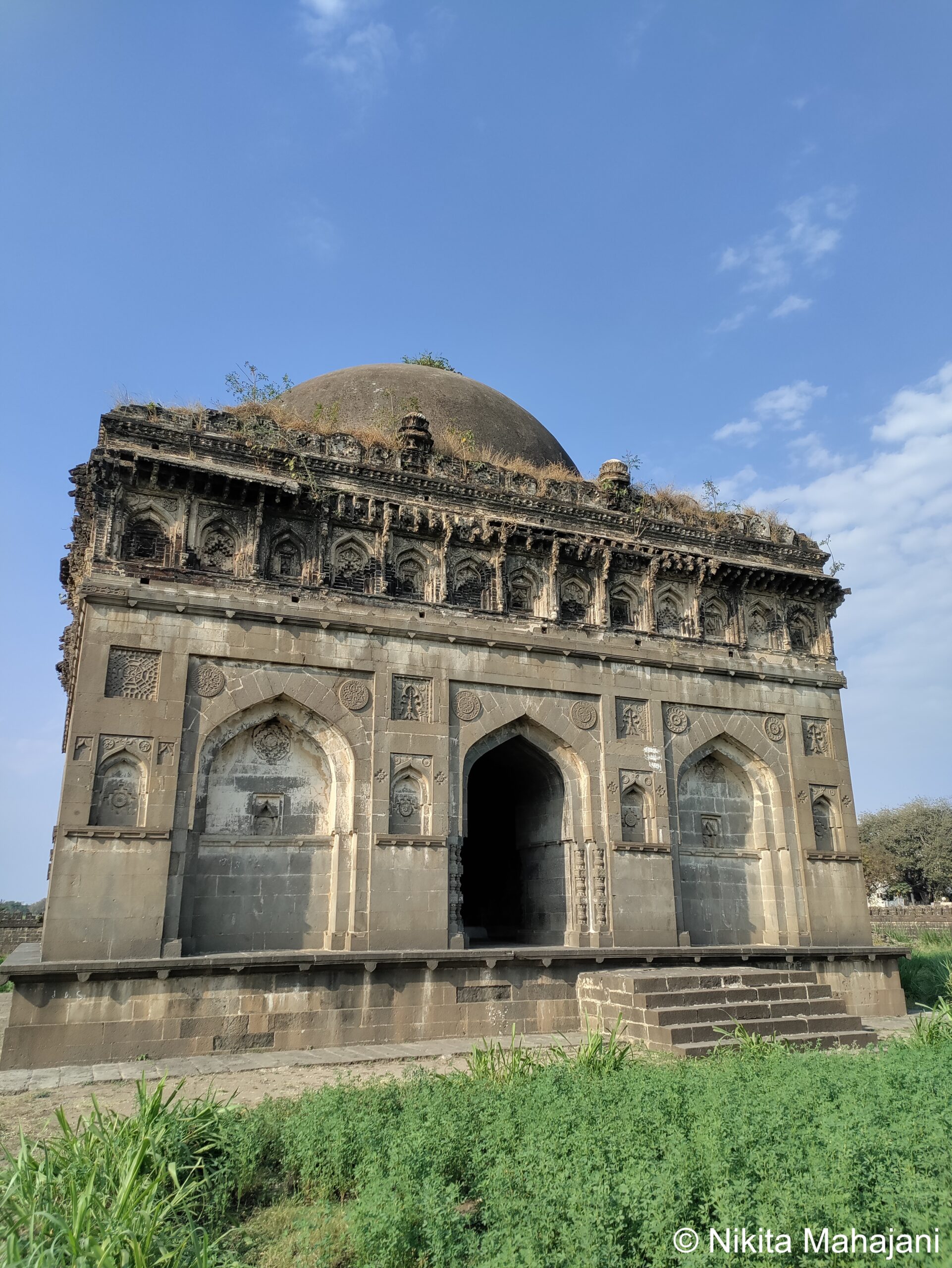
After entering the main gate of the protected monument of the Tomb of Nizam Ahmed Shah, we also came across a step well and a small unnamed tomb with an unusual conical roof. I quickly made a sketch of it.
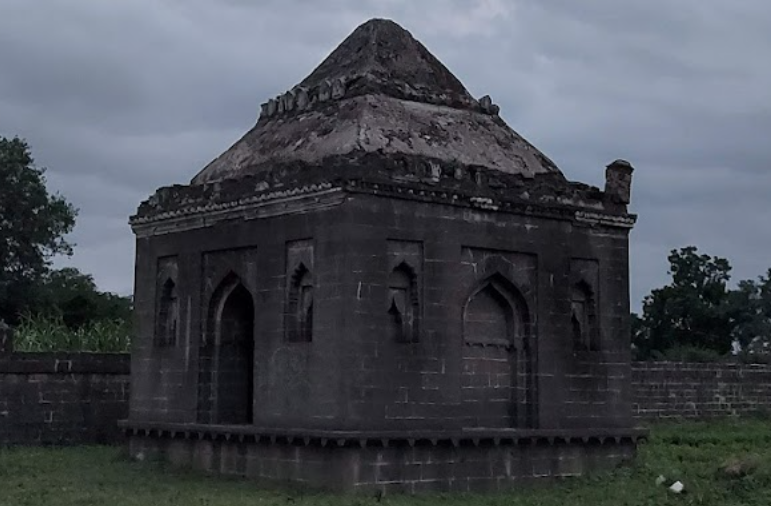
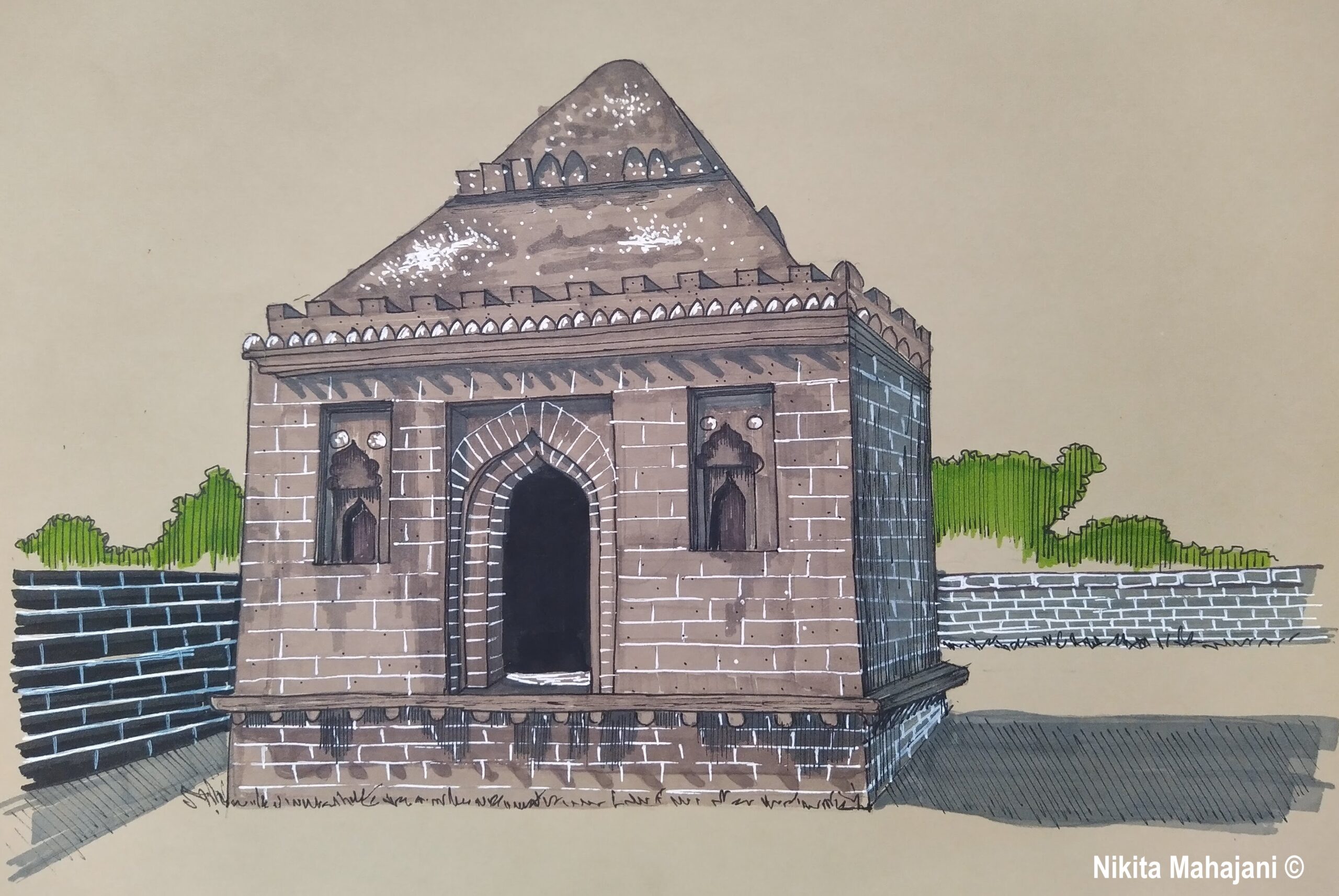
While coming back from the tomb towards the parking, I again came across another Khaal bachha hung in the slum. Seeing the lifeless calf hanging in the cowshed by this historic tomb strikes me with deep sadness. As a vegan, it’s distressing to witness such disregard for life, especially in a place meant to honor history and culture. It feels deeply contradictory and unsettling amidst the reverence for heritage. This visual of the dead calf made me believe one more time that human beings are the most destructive species on a planet earth.
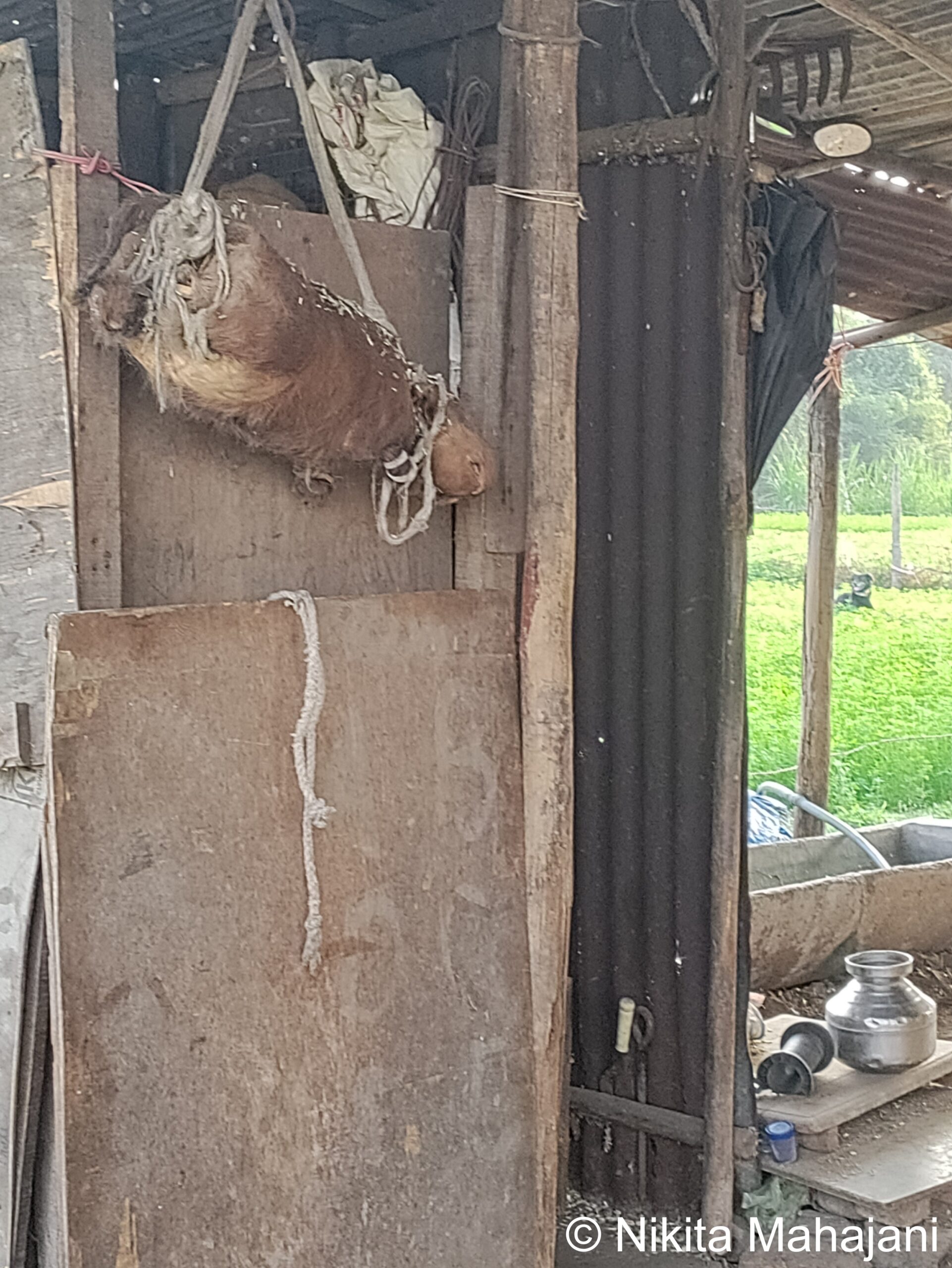
We then moved on to the Damdi Masjid situated in Ahmednagar cantonment. The Masjid lies on the road that goes around Ahmednagar Fort. The Masjid is quite deserted and cant be seen from the main road. It does not have enough signages. There is a small open area after entering the gate. We parked our car there and I left Sophie with my husband in the parking only. I did not take her inside the Masjid premises. The masjid stands out for its intricate carvings and the use of remarkably large stones. Built around 1567 A.D. by the noble Sahir Khan, it was funded by small daily donations, or damdi (1/16 Re.), from workers employed at Ahmednagar Fort. This mosque exemplifies Nizam Shahi architecture, showcasing impressive design and craftsmanship, especially in the carvings on its facade and central mehrab. The structure features a single prayer hall with three aisles, each two bays deep, with arched openings in the north and south walls. A flat roof is supported by arches rising from octagonal pillars set on foliated bases.
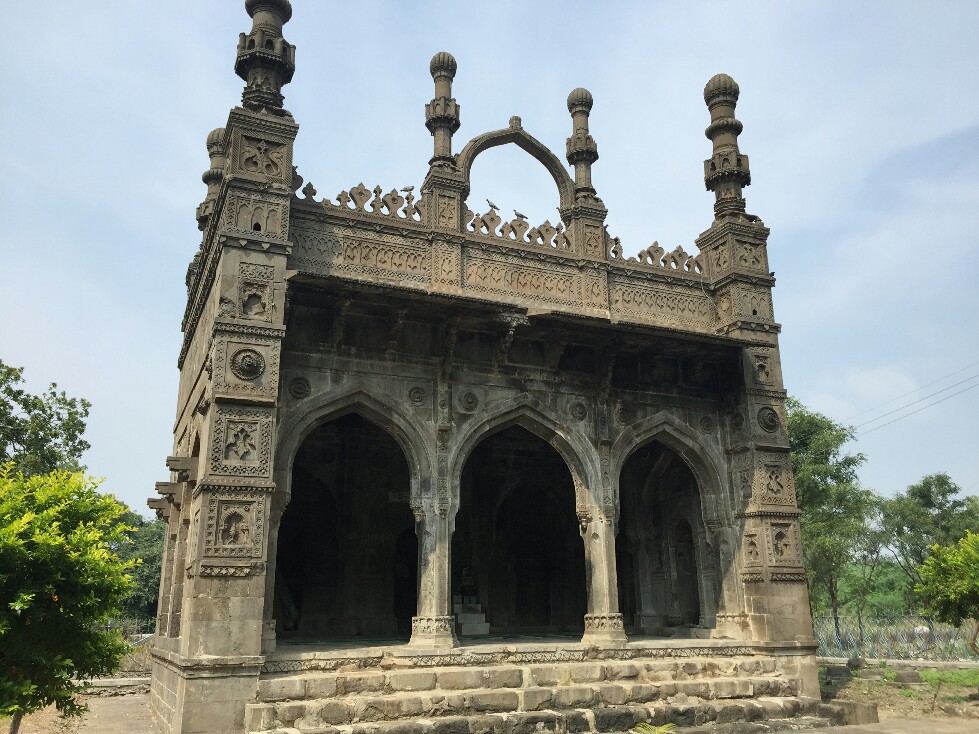
We later headed towards the Salabat Khan Tomb, perched on a hill. It is situated on the outskirts of Ahilyanagar. But the city is so small that you can reach the tomb within 20mins from the city centre. Since the tomb is on top of a mountain, it is seen from all sides from long distances as one is approaching towards it. The drive from the base of the hill towards the tomb is mesmerising. The road runs through dense forest vegetation on the mountain. Once you reach the top, the view is breathtaking, and the cool breeze made the drive worth it. Sophie enjoyed the uphill drive through the forest. Cars were parked parallel to the road and there were some local people selling cooked corn and juices. The monument did not have any watchman and the entry was free of cost. But still the entire premises are very well maintained. Sophie had her moment of fun, running around the open spaces as we soaked in the beauty around us.
The Tomb of Salabat Khan II, often mistakenly called Chandbiwi’s Mahel or Chand Bibi Palace, houses two cenotaphs—one for Salabat Khan and one for his wife—sheltered by a dome supported on three elegant pointed arch piers. The octagonal monument rises from a twelve-foot-wide base to a height of seventy feet, with a continuous twelve-foot-wide gallery encircling its interior. Access to this gallery is via a narrow, concealed staircase within the wall. The tomb and its octagonal base support a three-story, 23-meter-tall structure, with each side showcasing broad arched openings and projecting balconies on lotus brackets. A double-height octagonal chamber is flanked by domed bays on eight sides. The stately tomb sits on a vast hilltop terrace, offering expansive views over the plains towards Ahilyanagar, 10 kilometers west.
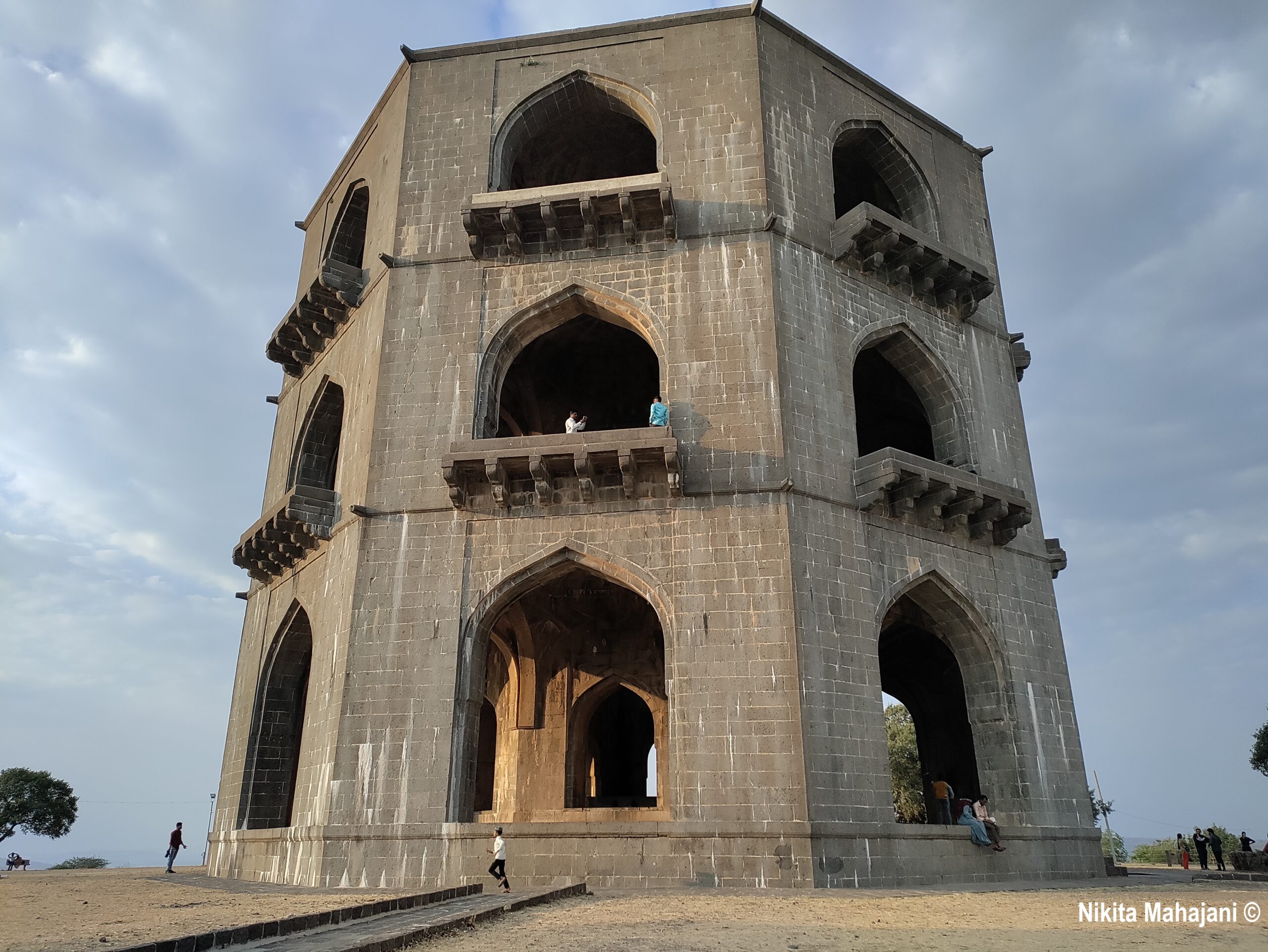
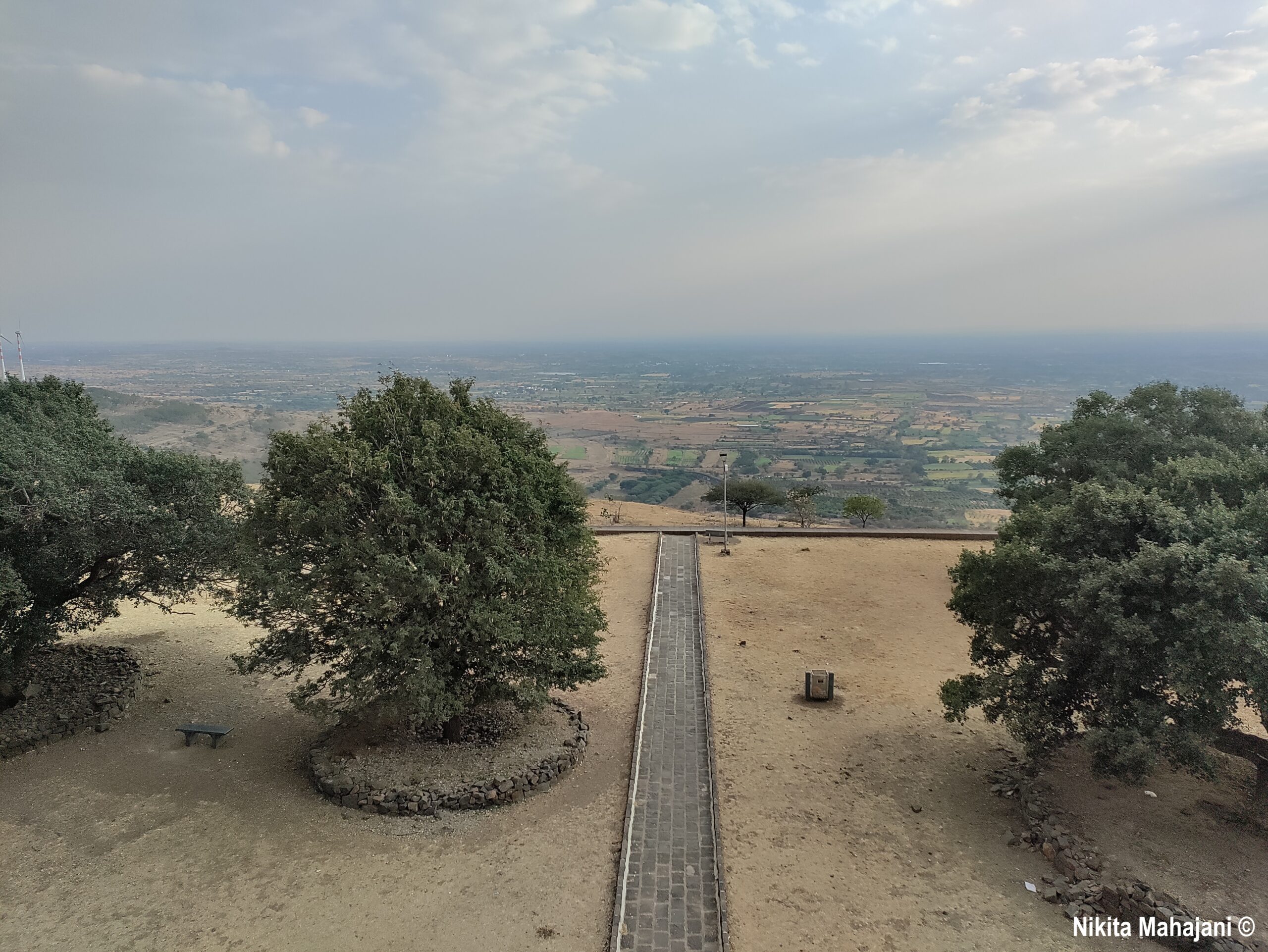
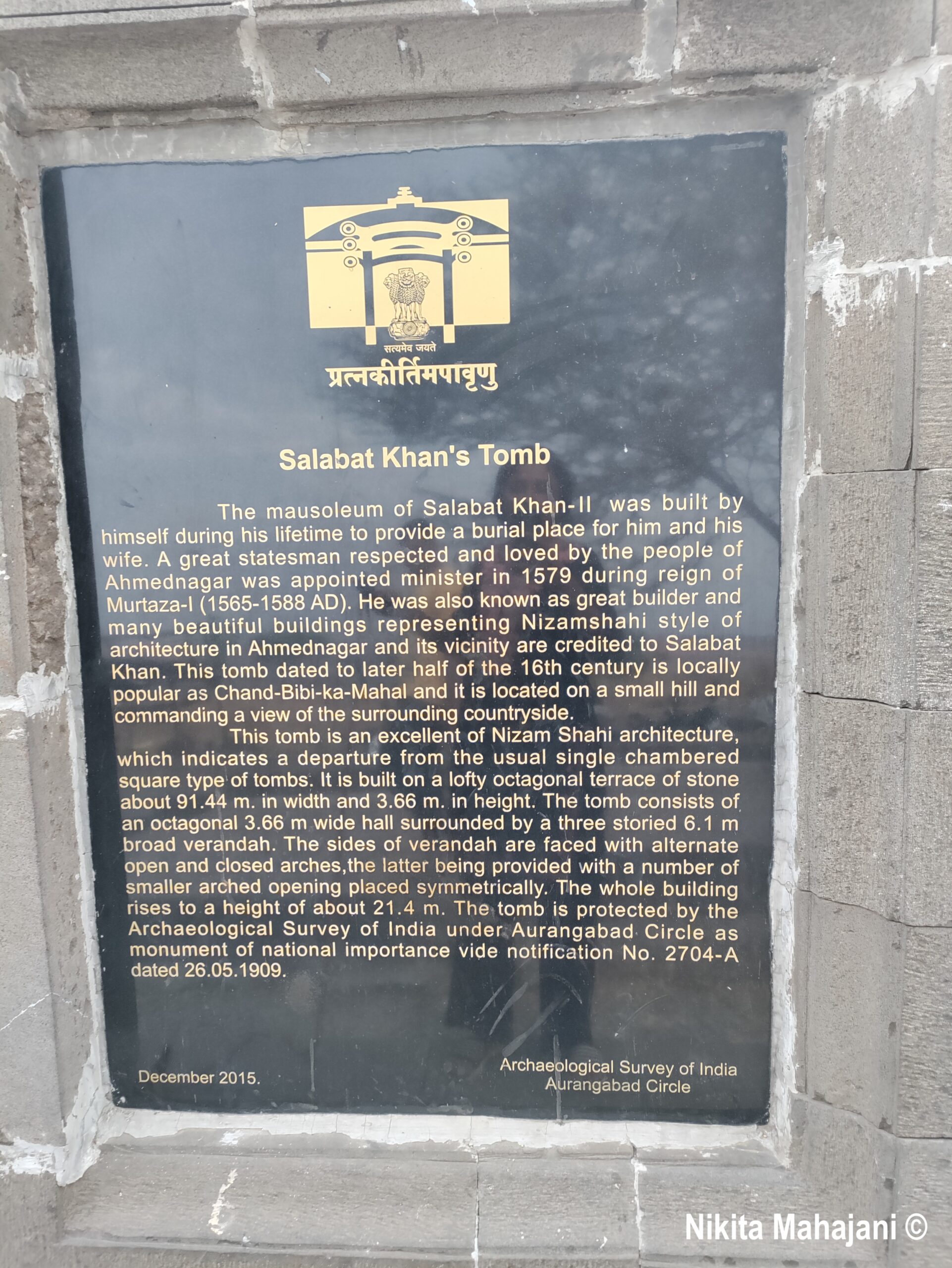
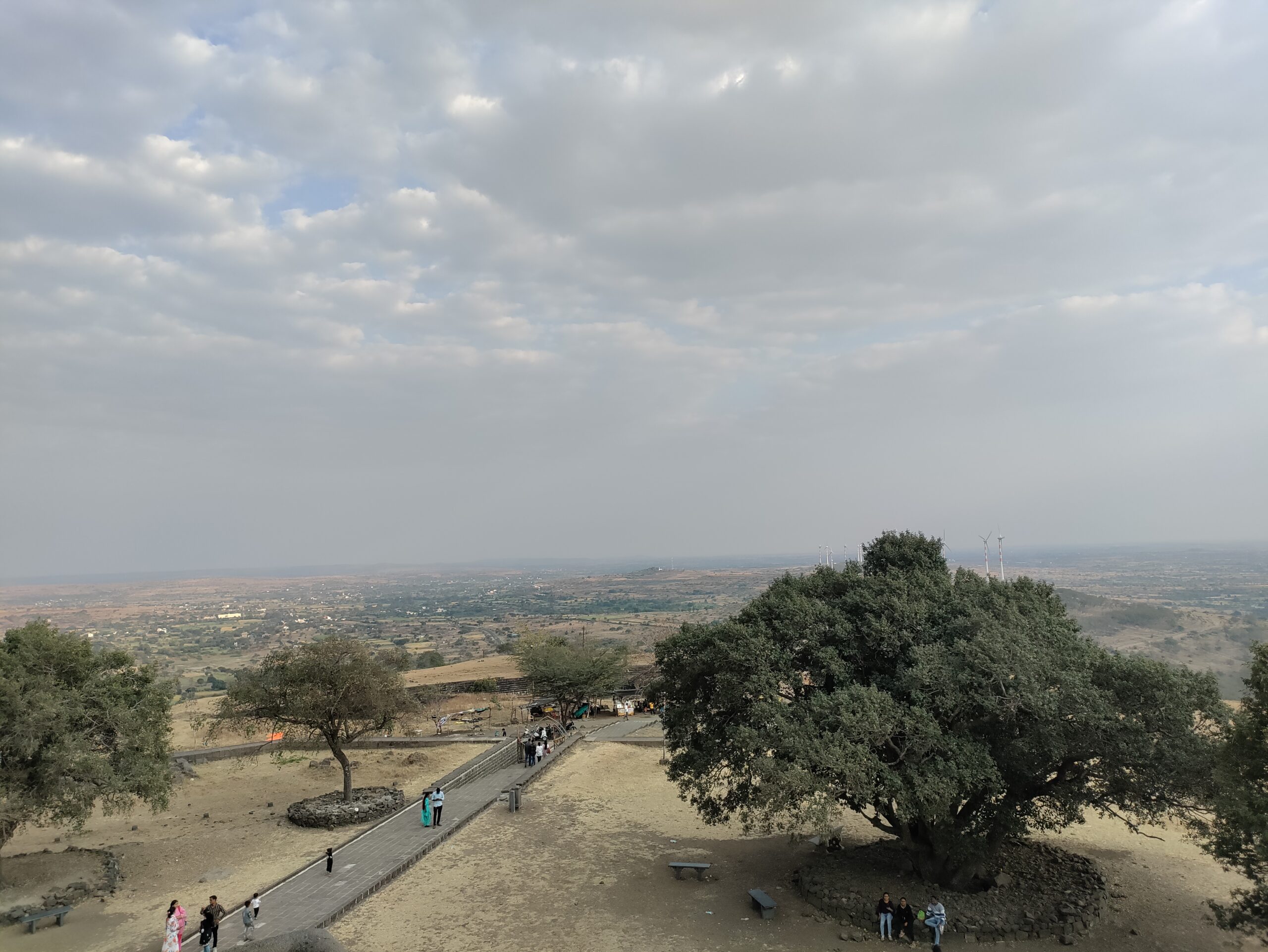
Our next stop was the Hatti Barav, an ancient stepwell with fascinating carvings. It is just 4 km from Ahilyanagar city centre near on Jamkhed road in the cantonment area. The place is deserted. It does not have any compound or guards. Hence you can visit this place any time on any day. Its completely pet friendly.
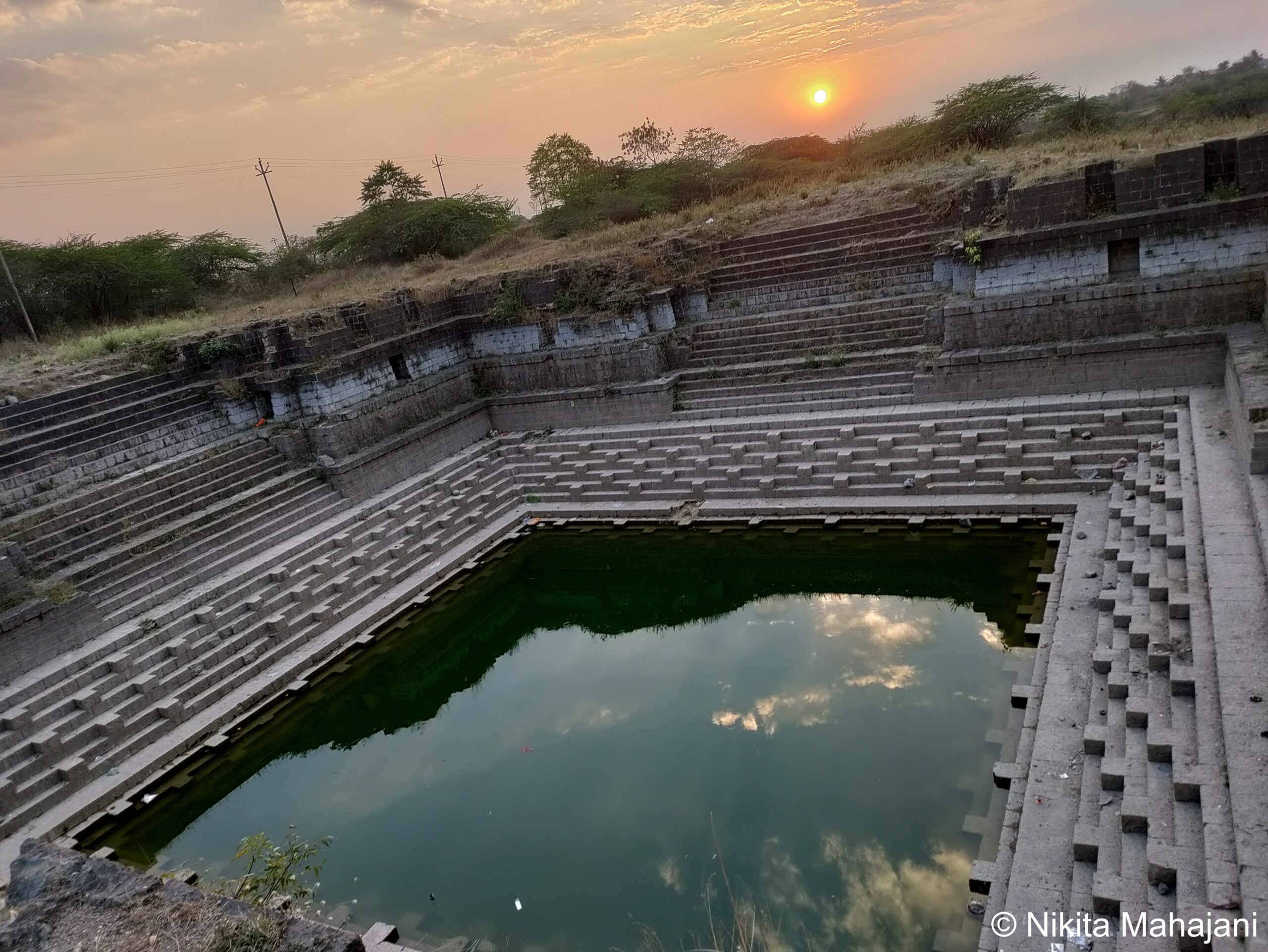
We watched the beautiful sunset from Hatti Barav, and then we left to visit the serene Farah Bagh. These lesser-known gems of Ahmednagar made us feel like we had traveled back in time. Farah Bagh is also located in the cantonment area near the Cavalry Tank Museum. We saw a lot of people coming for evening walks on the jogging track on the way to Farah Bagh. There is negligible vehicular movement in the neighbourhood and all we could see was joggers. We parked our car at the gate of Farah Bagh and entered its premises. It is an isolated monument with no guards and and no entry charges. There were only 2-3 kids inside the premises apart from us. The ancient octagonal palace of Farah Bagh now lies in ruins, with only traces of the ridge remaining from the pond that once encircled it. Around this area and the nearby city, about forty mosques are said to house tombs of royal favorites. Originally, Farah Bagh was surrounded by a pond 17 feet deep and 150 feet wide, bordered by a 500-yard garden where wood apple, mango, and tamarind trees still grow today.
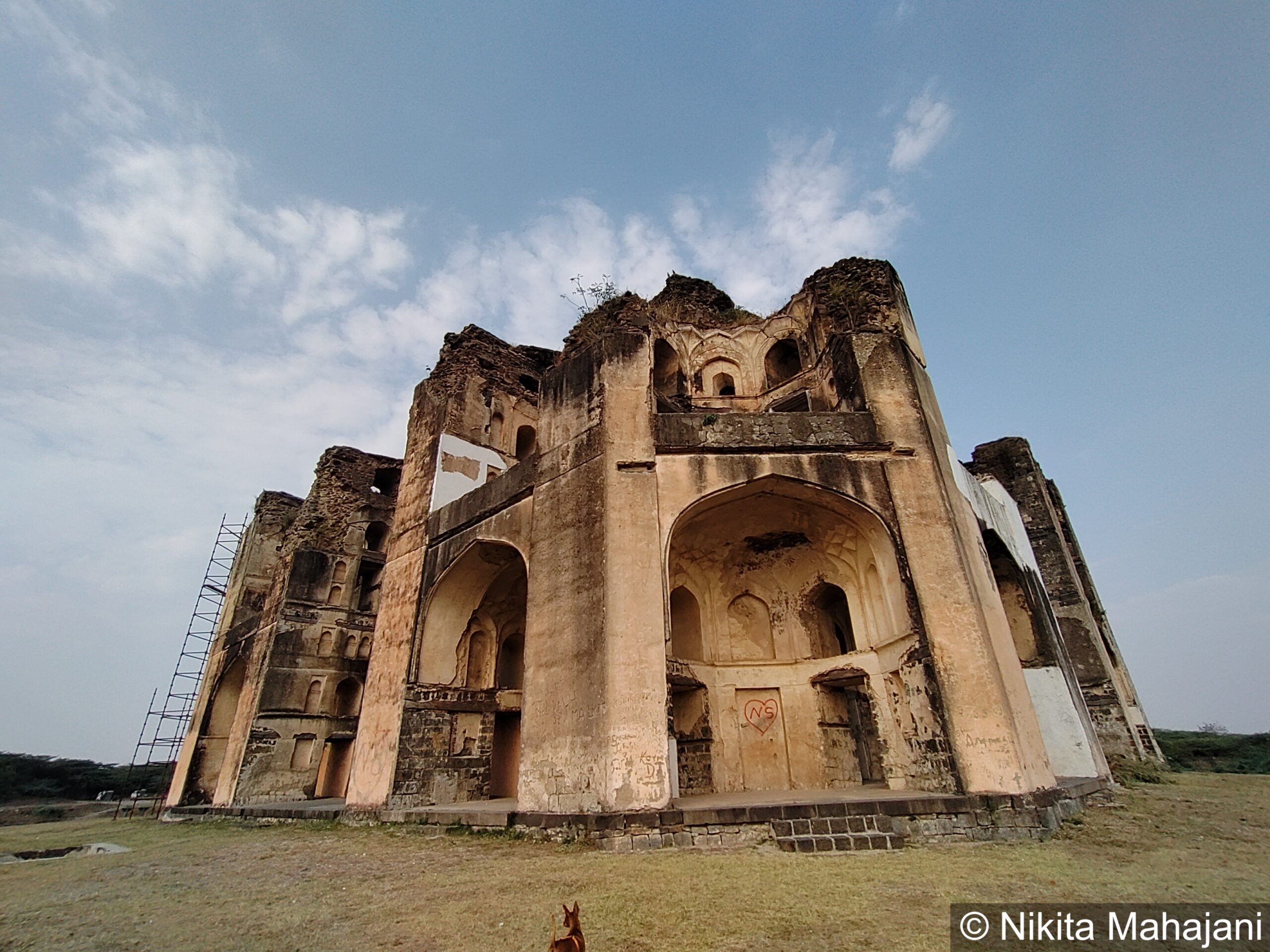
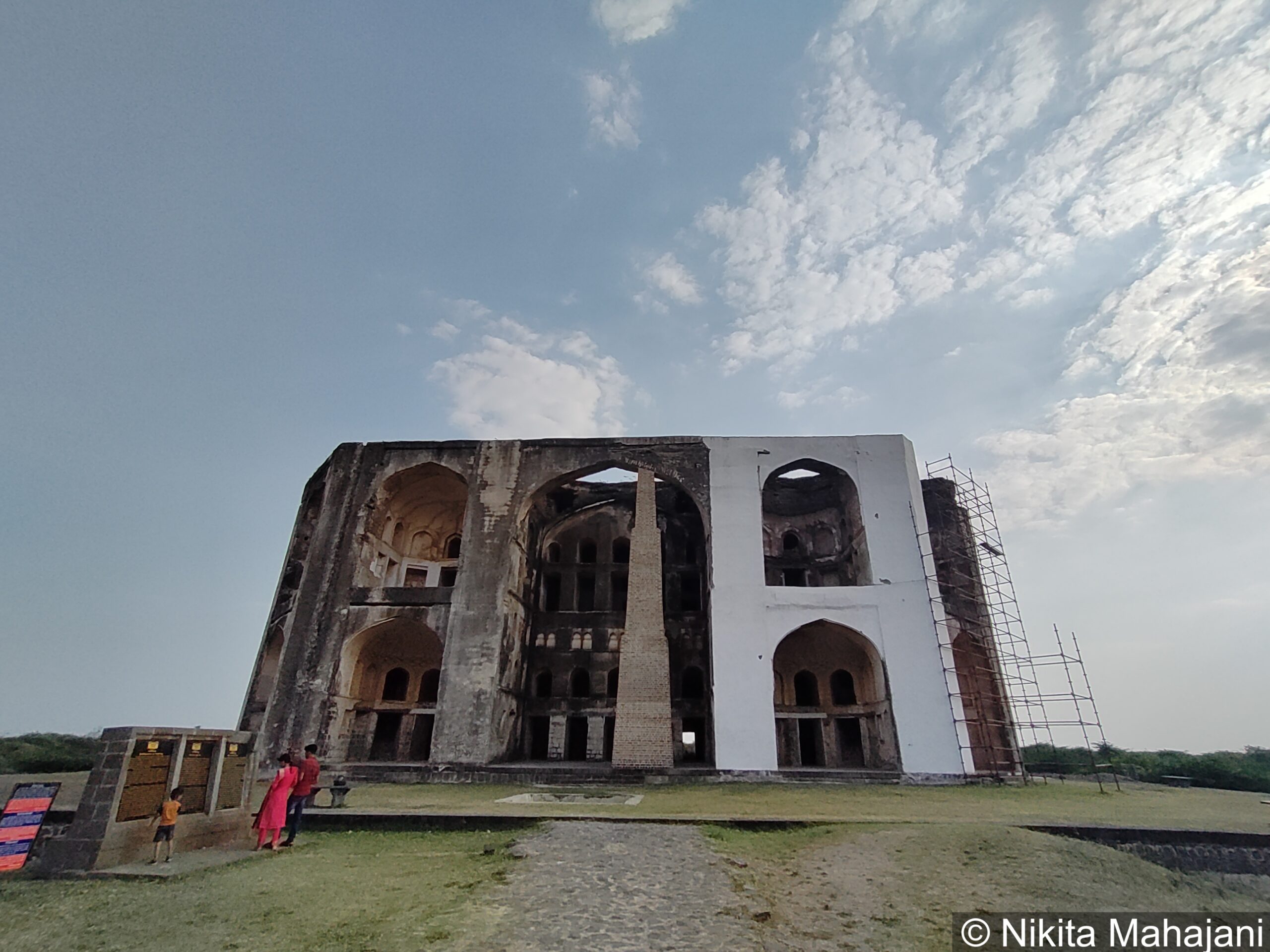
To read the blog on day 2 of Ahilyanagar click here
What are some not-so-pet-friendly places that you should avoid visiting with pets?
Cavalry Tank Museum – Pet’s are not allowed inside display area but can use other open areas.
Ahmednagar Fort – It is open to public only on 15th Aug and 26th Jan.
Where did we stay ?
Fanaswadi Resort, Chas, Ahilyanagar
Where did we eat ?
Saipooja Lodging & Restaurant, Shevgaon, Ahilyanagar
Phalke Farm Chikoochi Wadi Pure Veg, Chas, Ahilyanagar
Fanaswadi Resort, Chas, Ahilyanagar
Shivneri Misal, Manchar, Pune
